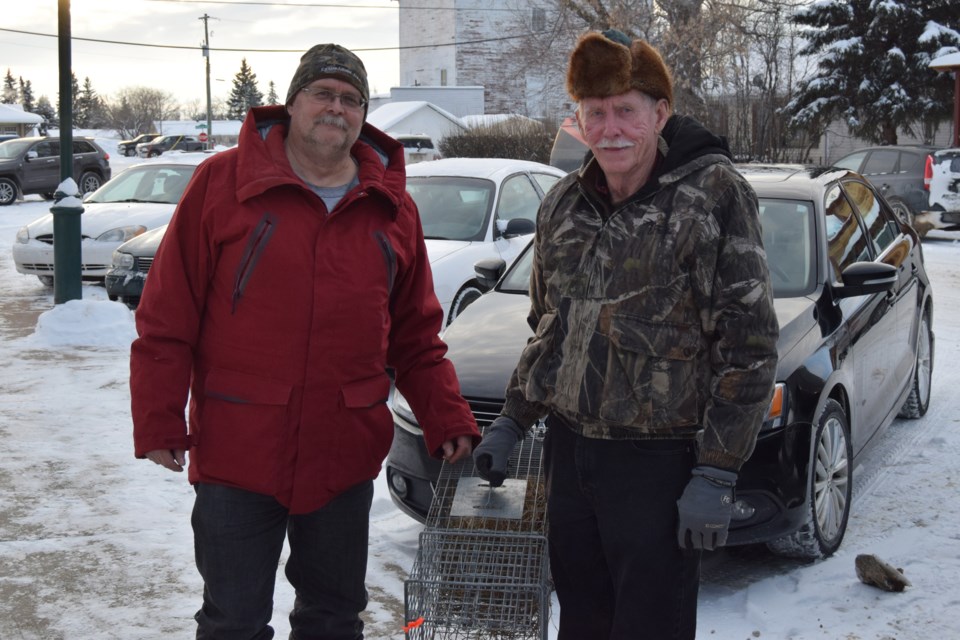BARRHEAD-The Canada-US border may be closed to non-essential travel, but there is one Canadian resident that should have no issues crossing the border in upcoming weeks — the fisher.
Fishers are carnivores that are closely related to the marten. It has a long slender body that is low to the ground and brown fur. It has long claws on both its hind and front paws. Its front and hind legs are black and it has a long, thick, black tail. It has a short muzzle and round ears on the sides of its head and males can weigh up to 12 pounds, with females weighing in at about one third less. Their numbers dropped so low that in 1998 the state declared them endangered.
Washington State is working with the Alberta Trappers Association, including a pair of Barrhead area trappers Chuck Hambling and Ryan Golby to help stabilize the population. And it looks like the duo's efforts are making an impact.
Hambling said this summer, Washington State officials captured a young male fisher that the pair had trapped in the winter for study. It was in near perfect health.
Last year, the first year of the program, Hambling and Golby contributed 11 animals of the 71 animals trapped in Alberta. Only one of the fishers was not released in their new home, Washington's Cascade Mountain Range.
"That speaks to the trappers themselves and the respect they have for the animal," Hambling said.
The program of relocating Canadian fishers started three years ago when they asked the B.C. government permission to allow trappers to capture the animals for relocation due to the 2017-2018 wildfire season as they did not want to place any undue pressure on the species. It was then when Washington State approached Alberta. An Alberta company, Bushman Inc., is coordinating the trapper’s efforts.
Hambling learned of the program through a Washington Department of Fish and Wildlife (WDFW) biologist who attended the Alberta Trappers Association's Rendezvous and Outdoorsmen Show.
"I was one of the first ones to sign up because I believe that our fisher population is stable enough that we can capture some animals and give them to another area to help repopulate the species, you feel like you are doing something for your neighbours," he said.
And so far, Hamling said the evidence proves that to be true. Before agreeing to join the effort for the second year, he talked to Alberta Fish and Wildlife officials and they confirmed the local fisher population is healthy. All the fishers Hambling and Golby captured are from areas within the County of Barrhead.
He added he has anecdotal evidence that supports this, saying this summer he had reports from county residents who spotted fishers running across various roads.
"Which is a very good indicator because I can say with some certainty that 80 to 90 per cent of Albertans have never seen a fisher ... and if you do, you are either lucky or it is a good indicator that the population is in good shape," Hambling said.
Although both Hambling and Golby are experienced trappers (Hambling, 79, was born in a cabin on a trapline), they received a crash course on how to trap the animals before they were given four live-traps and their corresponding transportation boxes.
"Everything is done to ensure the health of the fisher," he said.
One of the more difficult parts of the process, Hambling said is deciding where to place a trap. He said that there doesn't seem to be any particular reason for fishers to be in one location over another.
"There doesn't seem to be any rhyme or reason why one area would have fishers while another doesn't," he said, given equally favourable conditions.
It is a mystery Washington State biologists had hoped to solve as well when they met with Hambling and Golby.
However, Hambling said he is not sure they had any more insight on the subject when they left.
Fishers prefer wooded areas and favour rabbits, mice, voles, as their food source. However, as carnivores, Hambling said they will eat about just about anything.
"They are opportunists," he said. "They will eat cat and dog food off your porch or a bird."
Once trapped, the fisher is then moved to a special box and transported to the Calgary zoo where it is examined and treated by a veterinarian. If the animal is deemed suitable, it is then fitted with a GPS tracker and sent to Washington for release.
"They [WDFW biologists] located a female fisher who had babies," Hambling said.
Because of the success of the program, Hambling said this year they might have the option of being more choosy of which animals they send to repopulate. Specifically, he said the program is looking for large breeding males.
"Any others we might be able to release," he said.
Hambling and Golby will begin looking for fishers Oct. 1.
[email protected]



